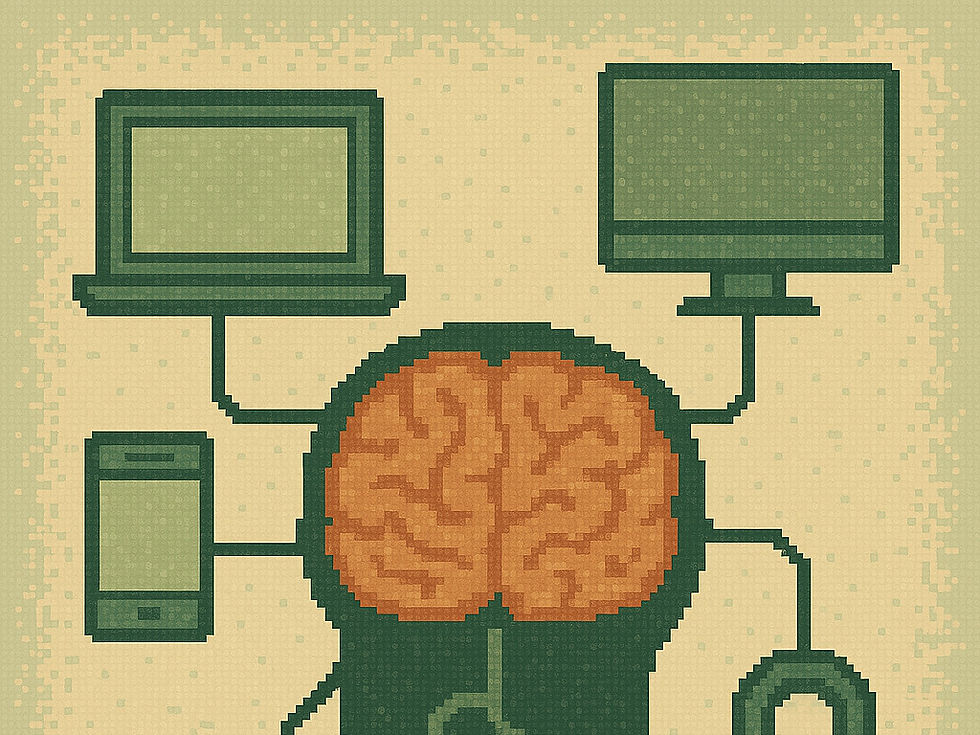What Is Self-Supervised Learning in AI?
- learnwith ai
- Apr 4
- 3 min read
Updated: Apr 5

In the rapidly evolving world of artificial intelligence, self-supervised learning has emerged as one of the most powerful and promising paradigms for training intelligent systems. Unlike supervised learning, which requires large amounts of labeled data, or unsupervised learning, which focuses on finding patterns in unlabeled data, self-supervised learning blends the strengths of both — enabling machines to learn from raw data by generating their own supervisory signals.
The Rise of Data Without Labels
Traditional machine learning models rely heavily on labeled datasets. However, labeling data is expensive, time-consuming, and often impractical at scale. This is especially true in domains like medical imaging or natural language processing, where expert annotation is required.
Self-supervised learning tackles this challenge by creating tasks that allow a model to predict a part of the input from other parts of the input. These prediction tasks are known as pretext tasks, and they serve as a way to pre-train a model on vast amounts of unlabeled data.
For example:
In computer vision, a model might be trained to predict the missing portion of an image.
In natural language processing, it might be asked to guess the next word in a sentence or fill in a blank.
These tasks help the model learn representations of the data that are later fine-tuned for specific downstream tasks such as classification, segmentation, or translation.
How Self-Supervised Learning Works
Self-supervised learning generally follows a two-step approach:
PretrainingThe model is trained on a large, unlabeled dataset using a self-generated task. It learns to understand the structure, patterns, and features of the input data without human supervision.
Fine-tuningOnce the model has developed a strong internal representation, it can be fine-tuned on a smaller labeled dataset for a specific task. This approach significantly reduces the need for large labeled datasets and accelerates learning.
Why It’s a Game Changer
The appeal of self-supervised learning lies in its efficiency and scalability. It leverages the abundance of unlabeled data — texts, images, audio — that’s already available in enormous quantities.
Key benefits include:
Reduced dependence on labeled data
Better generalization to new tasks
Enhanced performance in low-resource environments
Accelerated learning with fewer examples
Companies like Meta, Google, and OpenAI are investing heavily in self-supervised methods, recognizing their potential to unlock general-purpose AI systems.
Real-World Applications
Self-supervised learning is no longer experimental. It is already powering breakthroughs in:
Natural Language Processing (NLP): Transformers like BERT and GPT rely on self-supervised techniques to achieve state-of-the-art performance.
Computer Vision: Models like SimCLR and DINO have demonstrated impressive results in image recognition without labeled data.
Speech Recognition: Self-supervised models such as wav2vec are revolutionizing how machines learn to understand spoken language.
Healthcare: Predictive models trained on medical records or images can assist in diagnostics with minimal manual input.
What’s Next?
As self-supervised learning matures, it is expected to become the default approach for training AI models across industries. Researchers are exploring more sophisticated pretext tasks and architectures that allow machines to learn even more complex patterns and semantics from raw data.
This approach brings us one step closer to artificial general intelligence, where machines can learn and adapt without constant human guidance.
Final Thoughts
Self-supervised learning represents a significant leap in AI. It teaches machines to learn like humans do — by observing, predicting, and refining their understanding of the world. It is not just a technical advancement, but a philosophical shift in how we think about intelligence and autonomy in machines.
—The LearnWithAI.com Team
.png)


